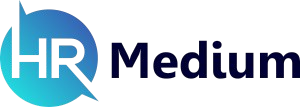The hybrid work model, far from being a temporary fix, has solidified its place as the future of work. It’s not merely about offering flexibility; it’s about strategically optimizing productivity, talent acquisition, and employee well-being in a distributed environment. However, this transition necessitates a sophisticated evolution of HR policies, moving beyond basic guidelines to encompass nuanced strategies for a high-performing hybrid workforce.
1. Strategic Hybrid Design & Role Optimization
Moving beyond simple eligibility, delve into a granular role analysis. Identify core tasks, collaboration dependencies, and individual work styles to tailor hybrid arrangements. Implement a dynamic scheduling system, allowing for flexible in-office/remote combinations based on project needs and individual performance data. Utilize data analytics to predict optimal work patterns and adjust policies accordingly. This requires a shift from a one-size-fits-all approach to a personalized, data-driven hybrid strategy.
Also read: What Does a Career Graph in HR Look Like
2. Asynchronous Communication & Knowledge Management Ecosystems
Elevate communication beyond real-time meetings. Invest in robust knowledge management systems, enabling seamless information sharing and collaboration across time zones. Implement asynchronous communication protocols, leveraging tools for recorded video updates, collaborative document editing, and project management platforms. Focus on building a culture of documentation and knowledge sharing, reducing reliance on synchronous interactions and maximizing individual productivity.
3. Outcome-Based Performance Management & Continuous Feedback Loops
Shift from traditional performance reviews to continuous feedback loops and outcome-based evaluations. Implement OKR (Objectives and Key Results) frameworks to align individual and team goals with organizational objectives. Utilize performance analytics to track progress, identify bottlenecks, and provide timely feedback. Foster a culture of continuous improvement, where feedback is seen as a tool for growth and development, not just evaluation.
4. Advanced Cybersecurity & Data Privacy Protocols
Recognize the increased security risks inherent in distributed work environments. Implement advanced cybersecurity protocols, including zero-trust security architecture, multi-factor authentication, and endpoint protection. Conduct regular security audits and employee training to mitigate risks. Develop comprehensive data privacy policies that address compliance with international regulations (e.g., GDPR, CCPA). Leverage advanced security tools to monitor and detect potential threats, ensuring the integrity and confidentiality of company data.
5. Holistic Well-being & Personalized Support Systems
Move beyond basic wellness programs to create personalized support systems. Offer access to virtual mental health counseling, ergonomic assessments, and personalized fitness programs. Implement flexible work arrangements that accommodate individual needs, such as compressed workweeks or flexible start/end times. Foster a culture of empathy and understanding, recognizing the unique challenges faced by remote employees.
6. Inclusive Leadership & Distributed Team Development
Invest in leadership development programs that focus on building inclusive and equitable remote teams. Train managers on effective communication, conflict resolution, and performance management in a distributed environment. Implement mentorship programs and peer-to-peer learning initiatives to foster a sense of belonging and support career development for all employees, regardless of location.
7. Technology Integration & Automation for Enhanced Productivity
Explore advanced technology solutions to streamline workflows and enhance productivity. Implement automation tools for routine tasks, freeing up employees to focus on strategic initiatives. Integrate collaboration platforms with other business applications, creating a seamless digital workspace. Leverage AI-powered tools for data analysis, project management, and communication, optimizing efficiency and decision-making.
8. Data-Driven Policy Iteration & Continuous Improvement
Establish a robust data collection and analysis framework to monitor the effectiveness of hybrid work policies. Track key metrics such as employee engagement, productivity, and retention. Conduct regular employee surveys and focus groups to gather feedback and identify areas for improvement. Implement a culture of continuous improvement, where data-driven insights are used to refine policies and optimize the hybrid work model.
Through these advanced strategies, organizations can move beyond basic hybrid work arrangements to create a dynamic, high-performing, and sustainable work environment that benefits both employees and the organization. This requires a commitment to innovation, adaptability, and a deep understanding of the evolving needs of the modern workforce.














